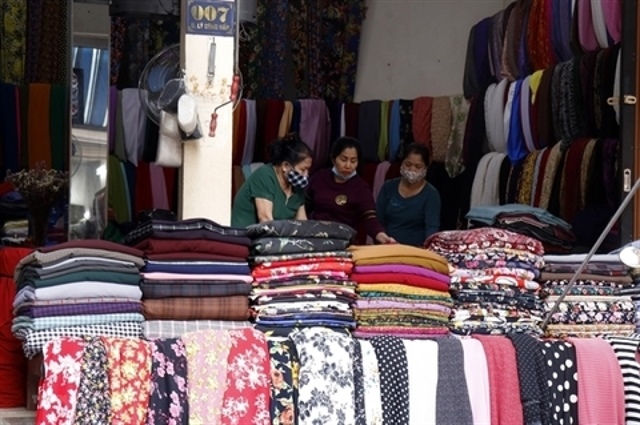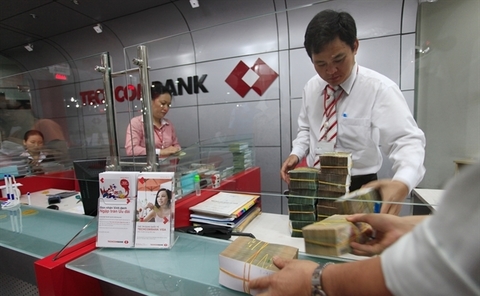Adjustment of capital flow necessary
Adjustment of capital flow necessary
Credit flow showed a surprise change in the fourth quarter of 2020. Dr. NGUYEN TRI HIEU, a financial expert, spoke with Saigon Investment, on how credit flowed into production and businesses and even entered various investment channels throughout the year.
Illustrative photo.
|
JOURNALIST: - Sir, by the end of the first quarter of 2020, credit growth was only 1.31%, by the end of the second quarter it increased by 3.63% and 6.09% by end of third quarter. As of 21 December 2020, credit increased by 10.14% and in the last ten days of the year it increased by 2%, and the whole year credit growth reached 12.13%. What is your comment on this development?
Dr. NGUYEN TRI HIEU: - Such a sudden increase in credit had many reasons. Firstly, in the first three quarters of the year, credit growth was low, and in the last quarter of the year businesses recovered quite well and economic growth was good and banks boosted credit. This growth is the foundation for this year, and in 2021 a good credit growth target can be obtained. At the same time, low credit growth in the first quarter of the year also affected credit income and profit compared to previous years, so banks also boosted credit, to increase profits during 2020.
Secondly, at the end of 2020, investment activities were more active when the economy showed signs of recovery. At the same time, interest rates decreased and investors could borrow at low rates to invest in securities as well as other types of investments. This factor enabled investors to borrow money to pour further into investment channels. These were the reasons for a sharp increase in credit growth in the last months of the year. In particular, I would pay special attention to the securities channel at the end of 2020 that became attractive to investors, causing them to borrow money to buy stocks.
- Sir, since 2016, the credit growth rate on GDP decreased by about 2 to 2.5 times. However, in 2020, credit increased by 12.13% while GDP only increased 2.91%, or was 4.1 times lower. So in 2020, was the efficiency of capital use not high?
- Yes, high credit on GDP may be a sign of money flowing into asset markets such as stocks and real estate. Normally, a credit to GDP growth ratio of 2.5 times will support the economy. Now the credit growth rate is 4.1 times higher than GDP, which means credit is being pushed into risky assets and not well supported. If the rate is too high, it can lead to an asset price bubble. Credit to serve production and business is the target set by the State Bank of Vietnam. However, at the end of 2020, quite a lot of capital was not flowing into production and business, and in my opinion this cash only flowed into the secondary market.
With the money flowing into the stock channel, if it is pushed into the primary market, investor money which is poured directly into stocks also supports business manufacturers. The cash flow at the end of 2020 was only in the secondary market, that is the money for those who have securities which they buy and resell in the financial market, only for financial purposes. This is also an issue that the State Bank of Vietnam and the Ministry of Finance must pay attention to in order to adjust and bring cash flow into production and businesses to support economic growth in 2021.
- Sir, is the credit growth target of 12% this year reasonable and how do you forecast the credit absorption capacity of businesses?
- A credit growth target of 12% for this year is reasonable, as this year Vietnam has set a GDP growth target of at least 6%. In a complicated disease situation, this would be too good to achieve. At 6%, credit growth could be as high as 15%, but the credit growth target may also be slightly lower, so that if the growth is 5%, the 12% credit growth target is also suitable.
The ability to absorb capital of enterprises is always great, but the ability to borrow capital will continue to be low because businesses are being affected a lot by the pandemic. Large enterprises have good tolerance in liquidity and can absorb market pressure. On the contrary, 97% of enterprises are SMEs with weak health and vulnerability, so their ability to borrow money is much lower, possibly even lower than last year.
Therefore, this year only large enterprises can borrow money, while small businesses are being affected by the pandemic and cannot absorb capital. Therefore, in order for the economy to grow as per the set target, in my opinion, the Government must have measures to support enterprises, especially SMEs. I still hold the view of building a credit complex as proposed last year to support SMEs in accessing capital.
- Sir, there is an opinion that the management agencies should not use credit quotas to control the market, so commercial banks can decide for themselves. What is your opinion on this?
- I certainly agree with that opinion. It is necessary to go to an open, free but stricter market by managing banks through the criteria prescribed by law such as equity, minimum capital adequacy ratios, outstanding loans on bank accounts, short-term capital for medium and long-term loans, and other risk factors, instead of assigning targets as at present.
Because when banks have complied with the safety factor of operations, there is no need to use the credit limit as a barricade. Banks with strong growth capacity can grow themselves according to their ability, and banks that cannot grow will grow slowly by themselves, that is consistent with the market mechanism. In addition, the inspection of the State Bank of Vietnam needs a change, a switch from compliance inspection to risk management inspection, instead of only managing at the top level as it is doing currently.
- Thank you very much.




























